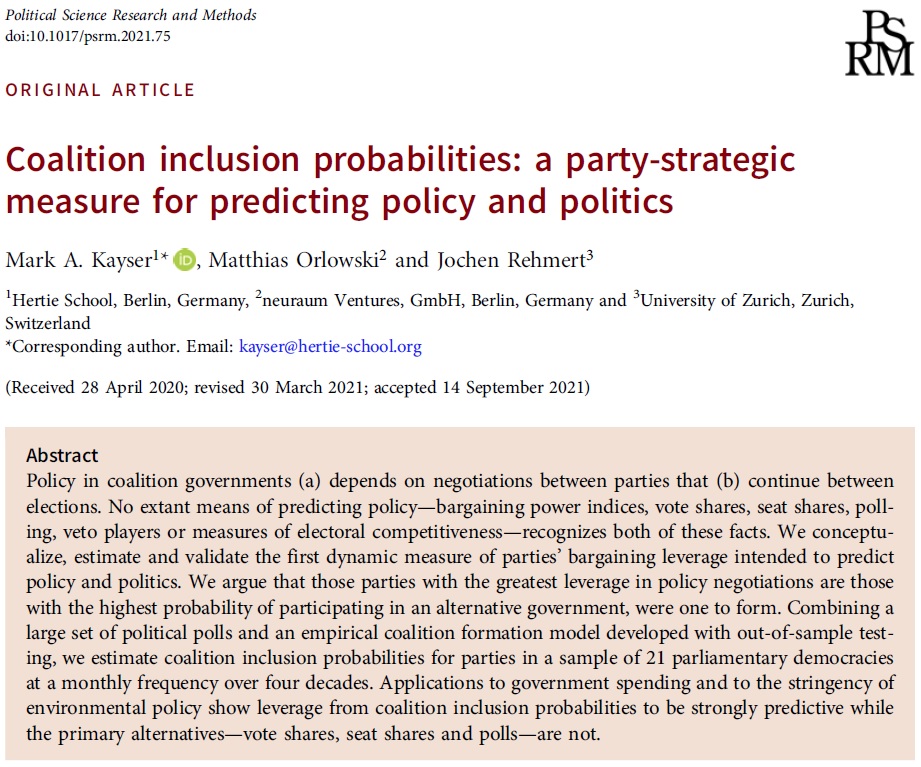Coalition Inclusion Probabilites
a party-strategic measure for predicting policy and politics
Why do shifts in public opinion often not translate into policy? Why and when can parties in (and out of) government move policy toward their preferences? In parliamentary democracies, which are the majority of democracies, coalition governments are common and outcomes are the product of bargaining between parties. Scholars have proposed several means of predicting which parties are most likely to prevail in bargaining, ranging from polls to bargaining power indices. Few of these measures, however, have much predictive power and most — the exception is polls — do not offer values between elections, falsely suggesting that coalition bargaining does not continue over the life of a government. We develop a dynamic empirical measure of parties’ bargaining leverage that can predict which party’s preferences make it into policy and laws. It should be useful for researchers interested in policy-making, pledge-keeping, coalition politics, representation and other issues. We argue and demonstrate that parties’ probability of government inclusion, were a new government to be formed, determines the credibility and efficacy of threats to leave the current government. Parties that can credibly threaten to abandon a government and form another, especially one excluding their current bargaining partner, have considerable bargaining leverage.
How do we estimate our coalition inclusion probability (CIP) measure? We collect party polls on a monthly frequency in 21 parliamentary democracies and take the mean for each party in each month. We then treat these polling average as if they were elections, thus assuming that politicians consider polls to be the most likely election outcome if an election were to be held at that moment. We then enter these poll averages into a coalition formation model optimized for out of sample prediction (KOR_par) to predict the probability of every potential coalition that could form. By aggregating differently, various measures of bargaining leverage can be created. For example, summing the probabilities of all possible coalitions that include a junior coalition partner but not the prime minister’s party, will calculate the bargaining leverage that the junior coalition partner has over the PM’s party.


So why not simply use polling data? Polls fail to predict policy outcomes because they ignore the coalition bargaining stage. Moreover, coalition leverage is neither a continuous nor a necessarily monotonic function of polling. A party’s bargaining leverage “jumps” to a new level only when expected seat shares (proxied by polling in PR systems) allow for new coalition possibilities.
We make our CIP data, as well as our polling data, available here and will update it periodically in the future.
How to Cite
If you use our data, please cite:
Kayser, Mark A., Matthias Orlowski, & Jochen Rehmert. 2023. Coalition inclusion probabilities: A party-strategic measure for predicting policy and politics. Political Science Research and Methods 11 (2), 328-346. doi:10.1017/psrm.2021.75
You can download the BibTex here.

